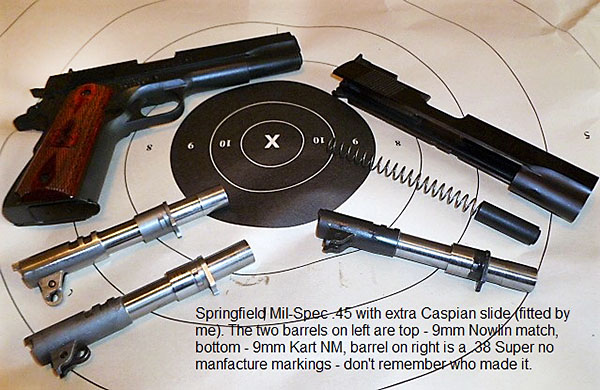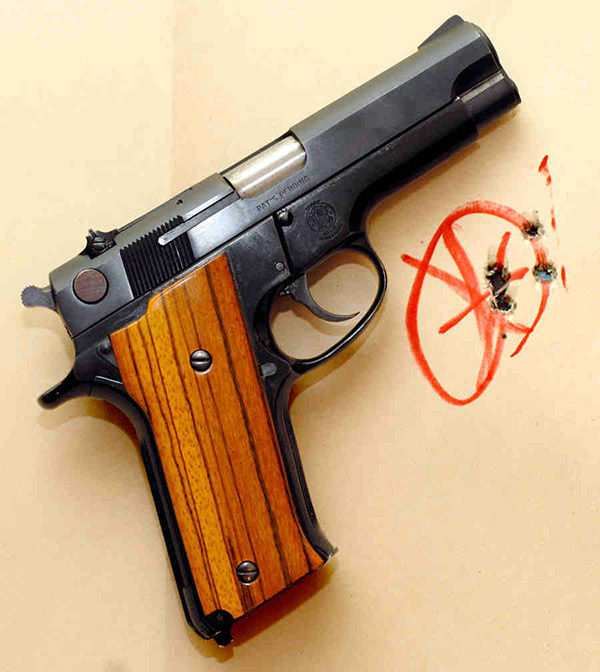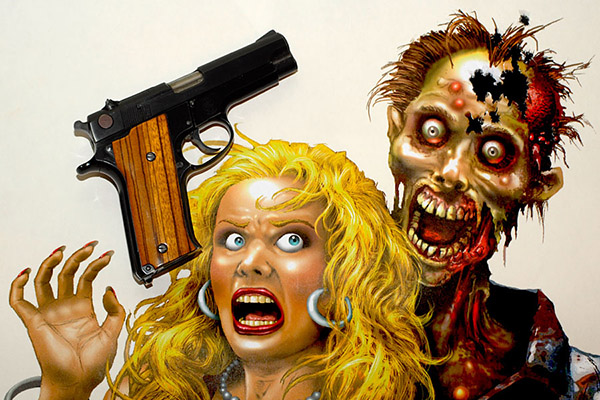My good buddy Paul, whom you’ve already read about on the ExNotes blog, is a retired aerospace engineer who has way more talent than me in the gun-tinkering arena. During one of our shooting expeditions, Paul brought along an interesting 1911…a .45 that he had re-barreled to shoot 9mm. There’s not a simple proposition, but hey, Paul’s good at this stuff and his 9mm conversion shot well. Then, a few months ago, we had a discussion about the merits of the .38 Super cartridge. That’s a round similar to the 9mm, but the case is longer, allowing for more propellant. The result? The .38 Super’s velocity is substantially higher than a 9mm (the .38 Super is roughly equivalent to a .357 Magnum).
Well, one thing led to another, I guess, and I received an interesting photo and email from Paul a few days ago…

Joe:
I started this project about 5 or 6 years ago. My intent originally was to buy a stainless steel Springfield 1911 9mm target pistol. At the time they were very scarce and wait time was close to a year at an inflated price. I then decided to purchase a mil spec .45 and buy a Caspian 9mm slide, barrel and slide components to convert the .45 to 9mm. I said to myself that if I was going this far with the project that I would buy a .38 Super barrel and have a pistol that will convert into a .45, 9mm, and .38 Super. I did the Caspian slide and 9mm Nowlin barrel fitting first, a few months after I originally purchased the pistol.
I shot the pistol in 9mm conversion at Joe’s range a few years back and it performed very well. The .38 Super conversion was put on hold until now. I purchased a new oversized bushing and three different barrel links to get the correct lockup, which arrived from Brownell’s a few days ago. I recontoured the barrel and fit the bushing to barrel, and then to the slide. This took 3+ hours to do with a 0.0005″ to 0.001″ tolerance fit on all surfaces. Link and lockup fitting were next.
When I fit the link to the barrel, a job that I thought would take 10 minutes, it actually took 1.5 hours. That barrel must have been a budget-manufactured barrel because the workmanship was poor in the link recess and not deep enough to allow the link to fully seat. I’m glad I have a milling machine. The lockup is now solid and everything cycles as it should.
I think it’s ready to test fire but first I have to reload some ammo for it. I’m going to do a Cerrosafe casting of the bore to see what the diameter is. The spec for the bullet diameter for the .38 Super is 0.356-inch and the 9mm it is 0.355-inch. I have some Berry’s plated bullets that are 0.356 but I’m not sure if they are 115 or 124 grains. I want to use 124 to 130 grain bullets. I do have a fair amount of 124 gr semi-wadcutter cast bullets that I did many years ago for my Colt 9mm target bullet experiment but I never sized or lubed them (looks like I’ll be bringing out the bullet sizer/luber). Not too sure that this style of bullet will cycle, but it’s worth a try.
I also purchased a .22 LR conversion kit for this pistol about four years ago, which I have also previously shot. So, now this 1911 Springfield Mil Spec will shoot .45 ACP, 9mm Luger, .38 Super, and .22 LR when it’s finally finished…how neat is that!
Paul
That’s awesome, Paul…and thanks for taking the time to explain your approach and for the photo. It’s a cool handgun and having that kind of versatility is a slick concept. I think it has to be especially satisfying knowing that you built it yourself.
We’ve found that folks who ride are frequently into guns, and vice versa (like good buddy Paul). It’s why we include interesting Tales of the Gun stories on the ExNotes blog. Want to see more?


